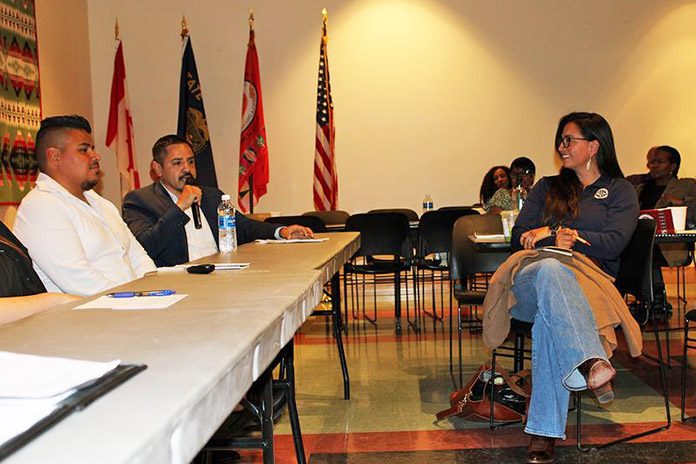
The Confederated Tribes of the Umatilla Indian Reservation (CTUIR) hosted three entities promoting equity in agriculture, specifically within Native American communities, on June 18 at the Tamástslikt Cultural Institute (TCI).
Native American Agriculture Fund (NAAF), U.S. Department of Agriculture (USDA) and Wallowa Resources officials spent the day addressing equitable access to USDA resources, strategies for enhancing agricultural productivity and sustainability within Native communities, as well as partnerships and projects that honor and integrate traditional Native knowledge and practices.
“This convening provided an opportunity for tribal stakeholders in the Pacific Northwest region to partake in dialogue with leaders at the local, state and federal levels, as well as exchange ideas and solutions to challenges and opportunities advancing agriculture,” NAAF CEO Toni Stanger-McLaughlin said.
Called the USDA Regional Equity Convening, the event shared the USDA’s work to improve the department’s experience for rural and tribal communities. Topics ranged from natural resource and climate strategies to forest restoration and workforce development and housing.
Since the release of the USDA’s Equity Commission’s Final Report in February, the department has co-hosted equity convenings to share the report and emphasize its recommendations. The convenings also serve as an opportunity to advance partnerships and institutionalize equity at the local level.
The USDA defines equity as the consistent and systematic treatment of all individuals in a fair, just and impartial manner, including those who belong to communities that often have been denied such treatment, including Indigenous and Native American, Black, Latino, Asian American, Native Hawaiian and Pacific Islander and other peoples adversely affected by persistent poverty or inequality.
“We encourage tribal leaders and Native farmers, ranchers and producers to attend convenings such as these to engage in conversations and share their unique perspective on their food, farms, land and communities,” Stanger-McLaughlin said.
CTUIR Board of Trustees Member at Large Lisa Ganuelas, who attended the event, said she was glad to see the regional convenings are reaching rural areas, as tribal communities are often rural and remote. “The number of tribal producers and individual Native Americans in agriculture is growing. They need to not only learn what local, state and federal resources are available to them, but their voices also need to be heard when it comes to distributing resources and helping develop policy.”
For NAAF information, visit Native American Agriculture Fund. For USDA information, visit USDA, and click Wallowa Resources for more information.








